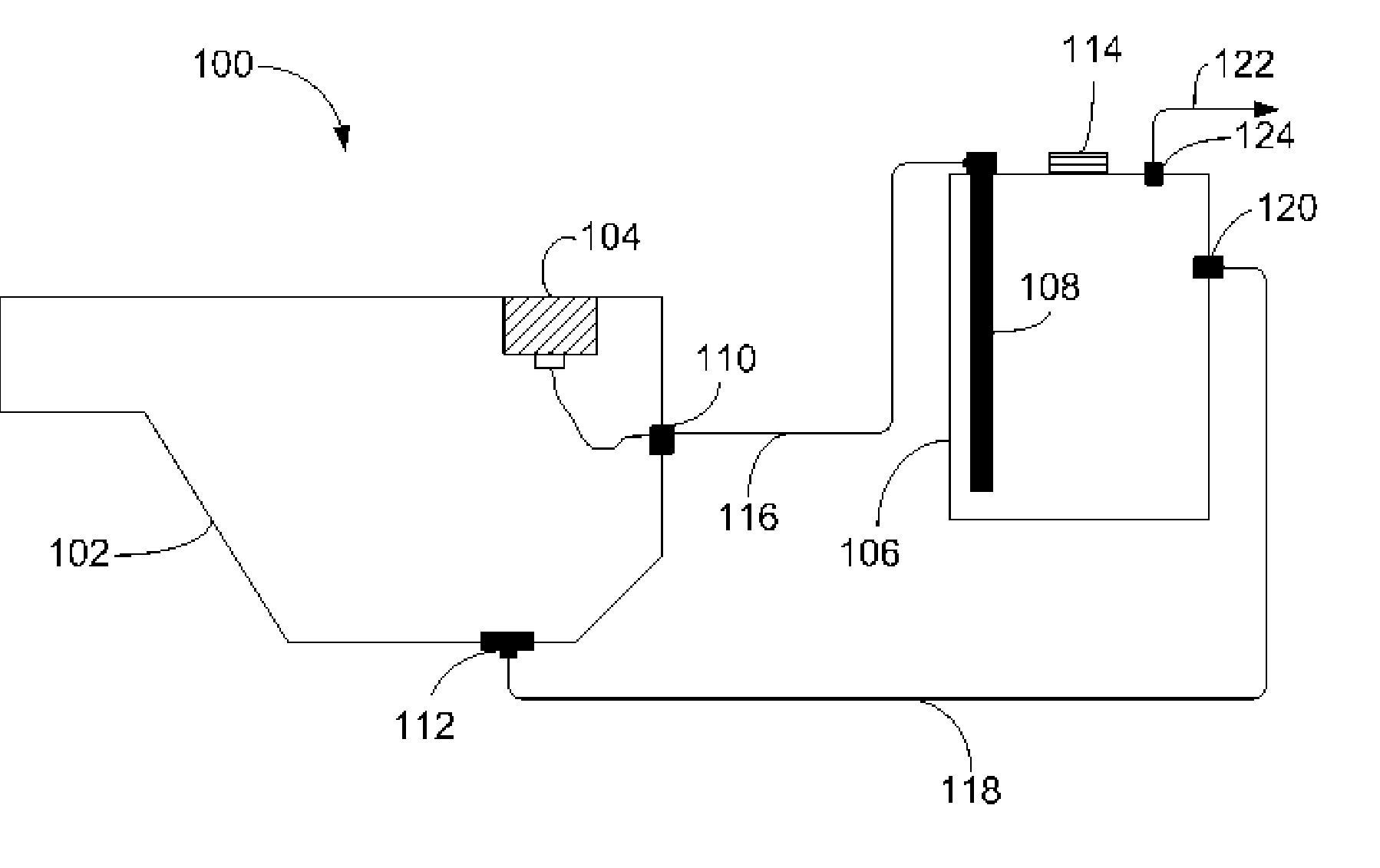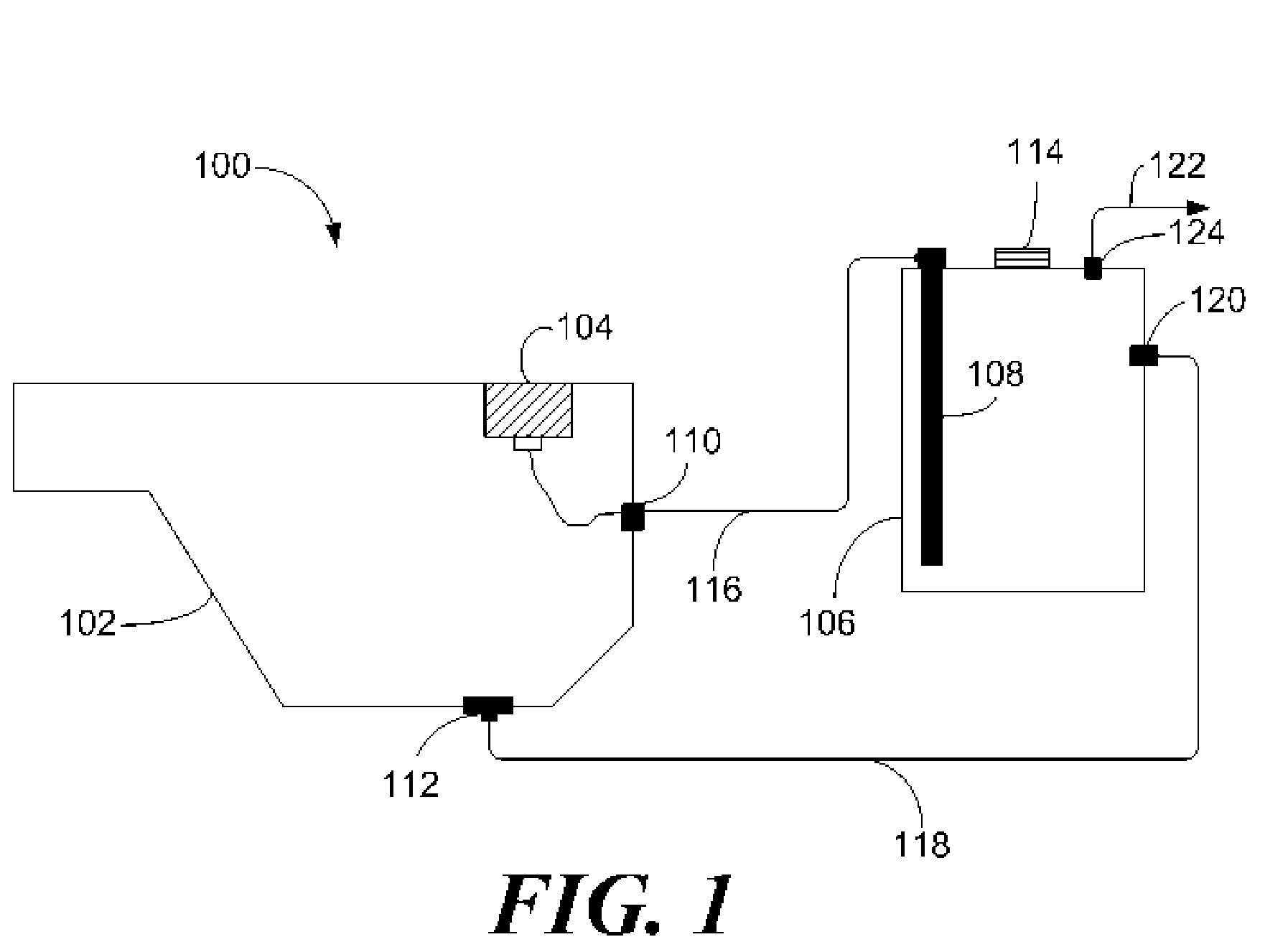Automated Oil-Change System and Method
- Summary
- Abstract
- Description
- Claims
- Application Information
AI Technical Summary
Benefits of technology
Problems solved by technology
Method used
Image
Examples
Embodiment Construction
[0017] Referring now to the figure, where the various numbers represent like parts throughout the several views, FIG. 1 shows an exemplary embodiment of the present invention, an Automated Oil-Change System. The System, generally referred to by reference number 100, may include an oil pan 102, an oil pump 104, an oil container 106, and an oil strainer 108. It will be clear to those skilled in the art that the present invention could be used for replacing any type of engine fluid and be used in any type of engine.
[0018] Various connections may be made between the major components of System 100. The oil pan 102 may include an oil pan commonly known in the art that is modified as described below. The oil pan 102 may be located in the preferred location for the engine type. The oil pump 104 may be connected to the inner side of the top wall of the oil pan 102 by methods commonly known in the art. The oil pump 104 may include any of those commonly known in the art, including those commo...
PUM
 Login to View More
Login to View More Abstract
Description
Claims
Application Information
 Login to View More
Login to View More - R&D
- Intellectual Property
- Life Sciences
- Materials
- Tech Scout
- Unparalleled Data Quality
- Higher Quality Content
- 60% Fewer Hallucinations
Browse by: Latest US Patents, China's latest patents, Technical Efficacy Thesaurus, Application Domain, Technology Topic, Popular Technical Reports.
© 2025 PatSnap. All rights reserved.Legal|Privacy policy|Modern Slavery Act Transparency Statement|Sitemap|About US| Contact US: help@patsnap.com


